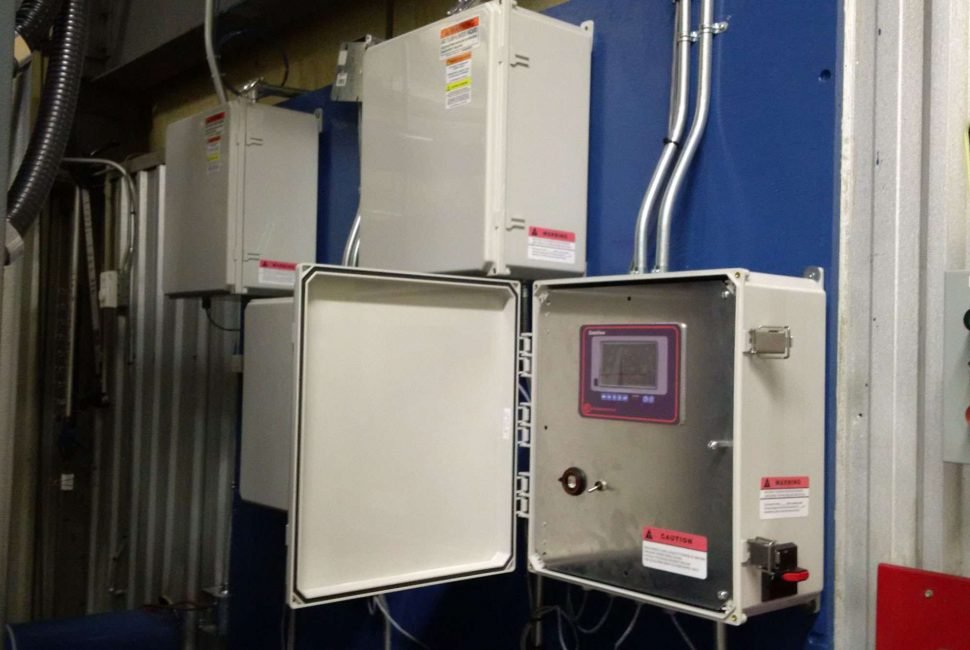Optimizing Compressor Control

By using a central control system it is possible to overcome the disadvantages presented in the preceding example. The central control system eliminates the need for the cascading pressure band configuration in favour of a single smaller pressure band. An optimizing compressor control will select the correct mix of compressors in order to meet demand and minimize energy. To achieve this it calculates the active flow demand by directly measuring the pressure and/or the flow into the plant. Using signal analysis the controller can anticipate demand changes, and load or unload compressors as required.
The characteristics of each compressor is entered into the controller. Knowing how much air each compressor can delivery, it’s rated horsepower, and it’s maximum and minimum pressure, the controller chooses which compressor to run at any given time. In systems without a variable speed compressor, one compressor is chosen as a trim compressor while the others are used to provide base load. When a variable speed compressor is available it can be used as a trim controller. A programmable schedule can change which compressors are used as base, and which compressors are used as trim so that any single compressor is not overworked.
A central compressor controller can monitor in real-time, pressure, flow, energy, and fault status. Ethernet and wireless connectivity allows the controller to send readings to the cloud for further analysis. Reports can be generated to provide useful information such as leak detection (why are we using so much air now?), and may predict motor failure by showing abnormal current or voltages.
The monitoring capabilities of a central controller provides the customer with a continuous audit of their air system. Sudden changes to demand or spikes in energy usage can indicate problems that require attention. Long term trends when compared with plant production can be useful in creating energy reduction plans.
Some of the advantages of a central control system are:
Not all compressed air systems require a centralized controller but many if not most will benefit from the monitoring capabilities that a controller can provide. Successful implementation requires that the system integrator fully understand plant requirements, and can make recommendations for changes in order for a centralized controller to function properly.


